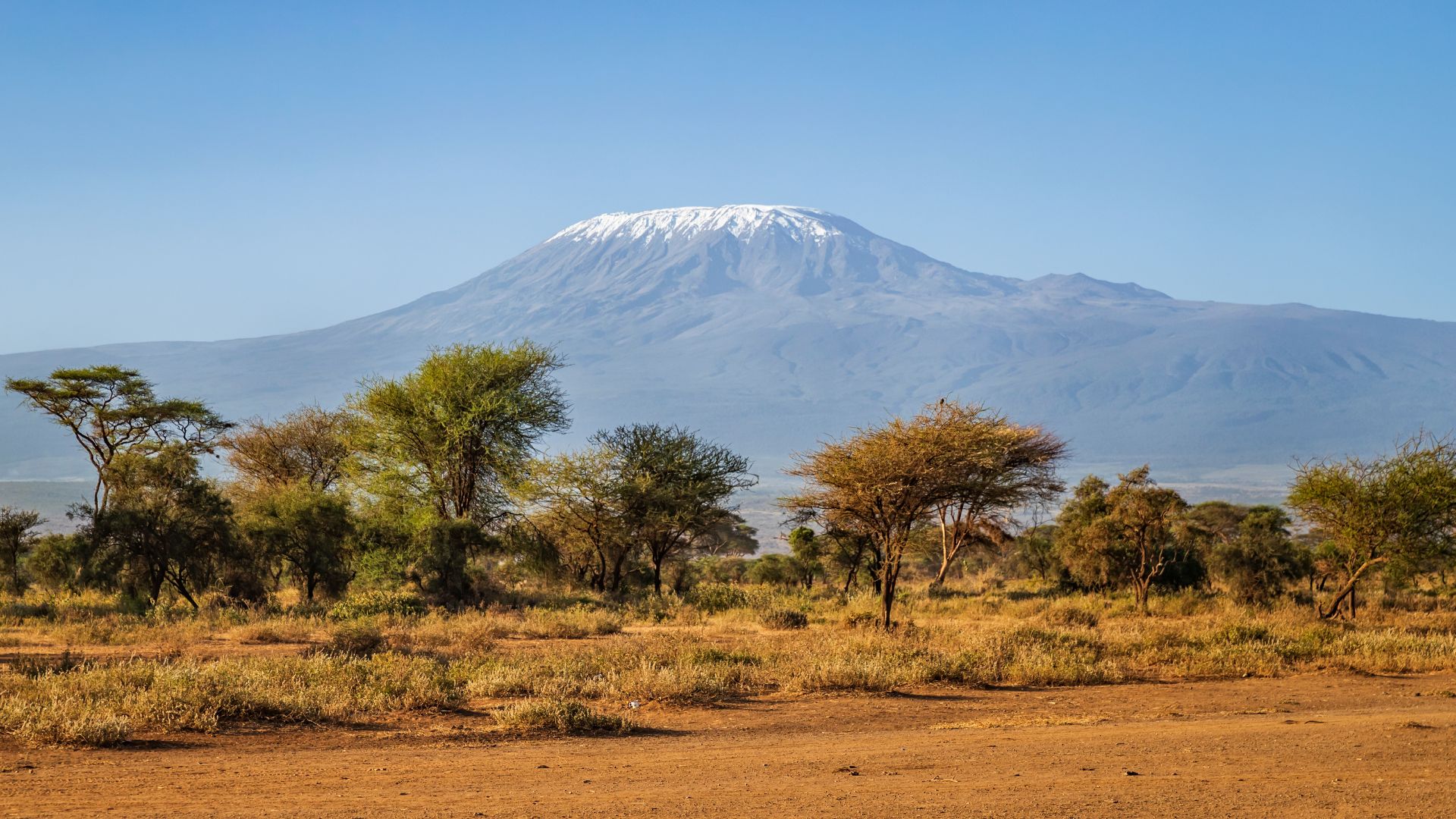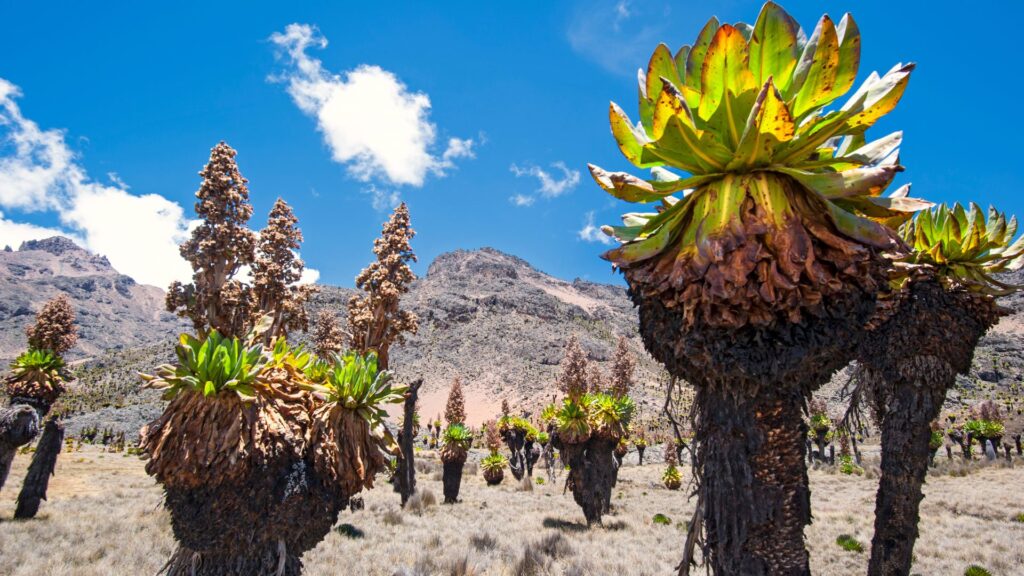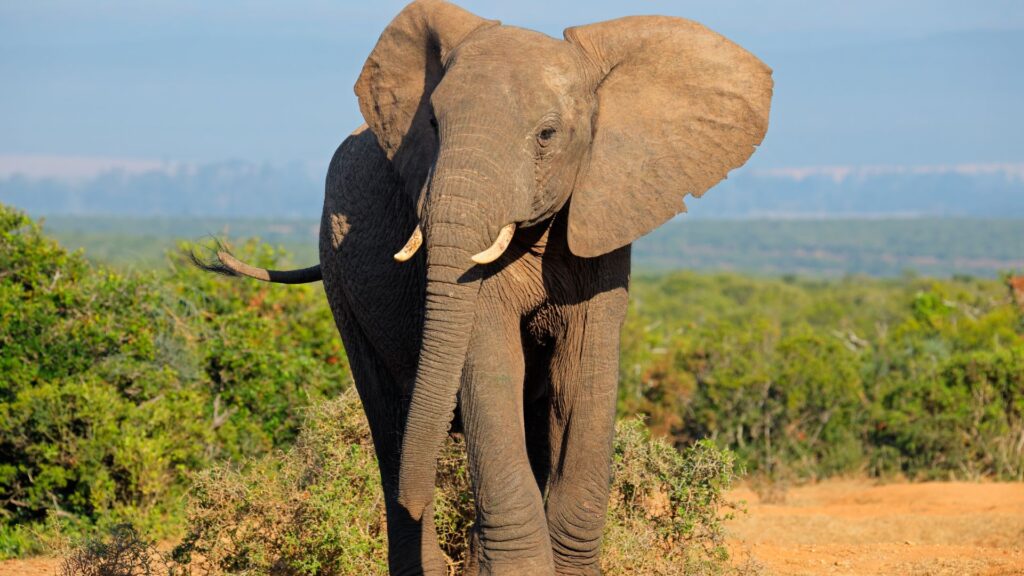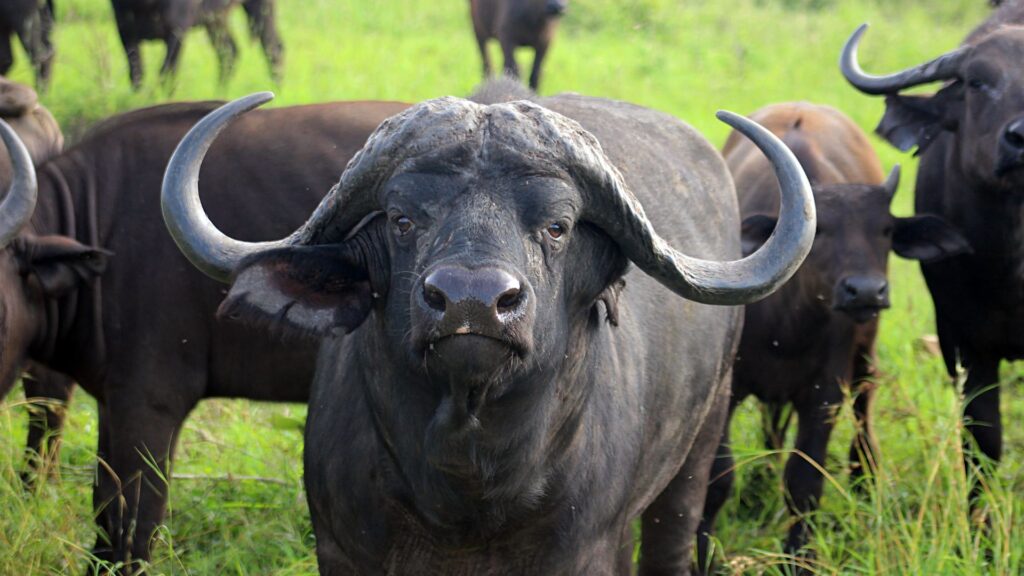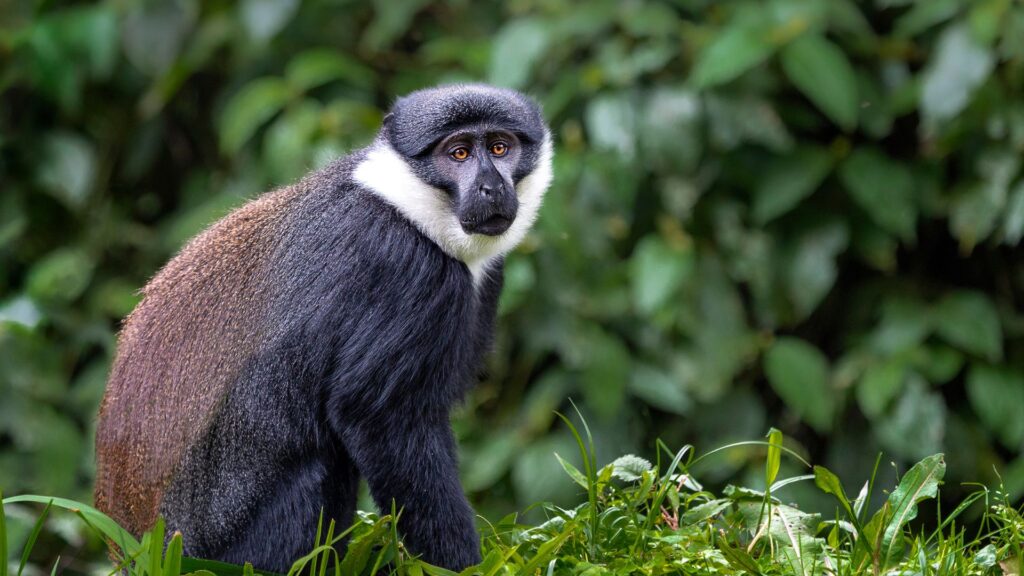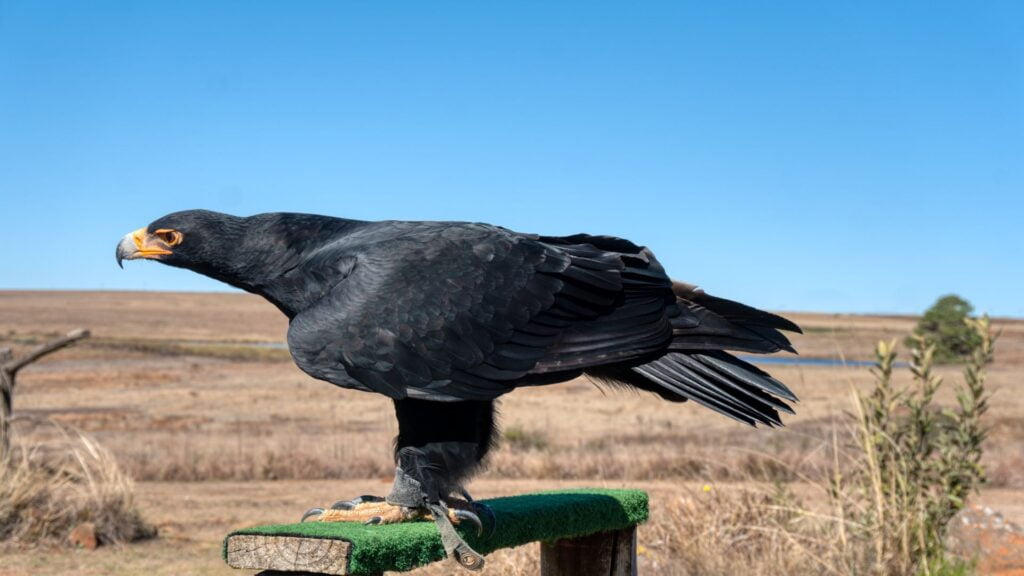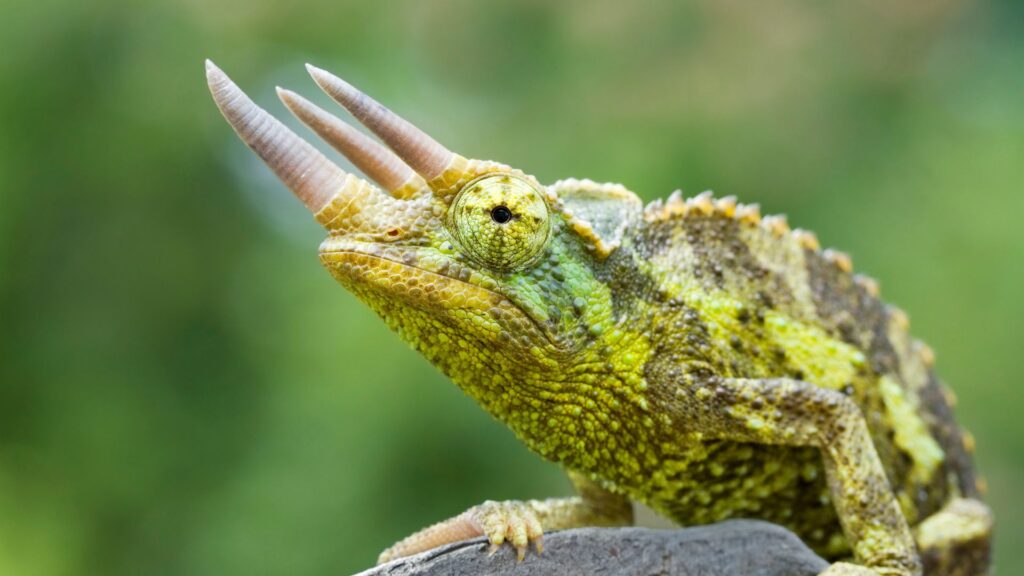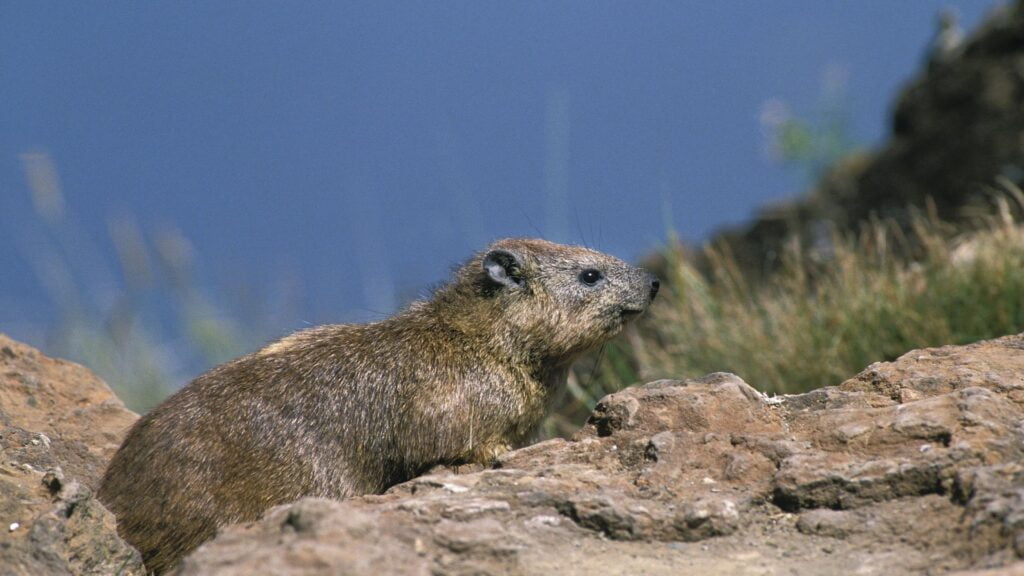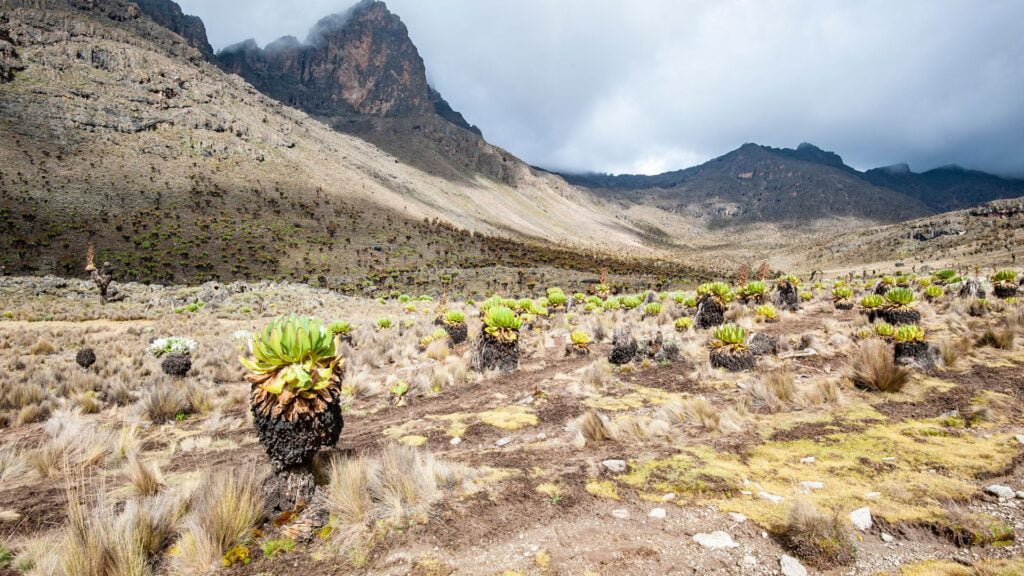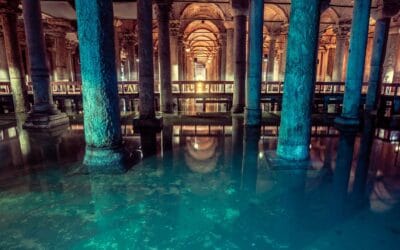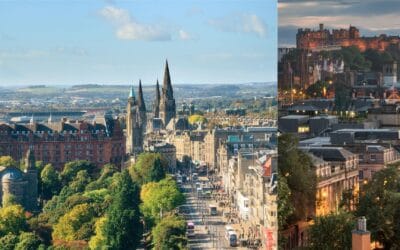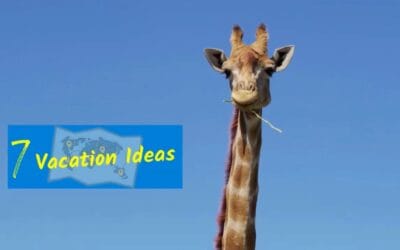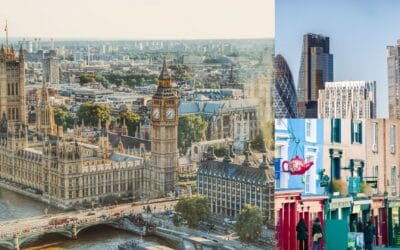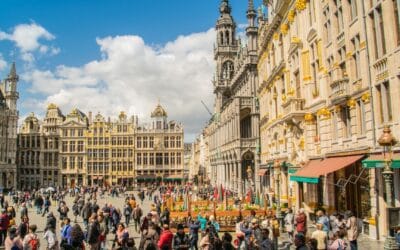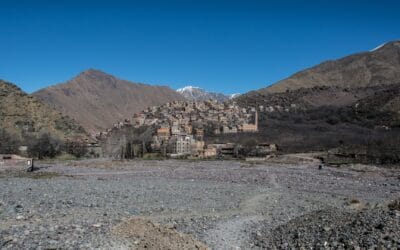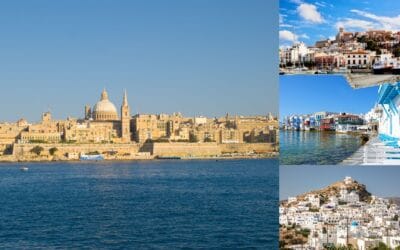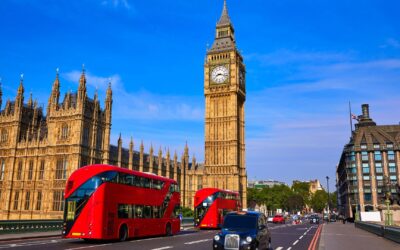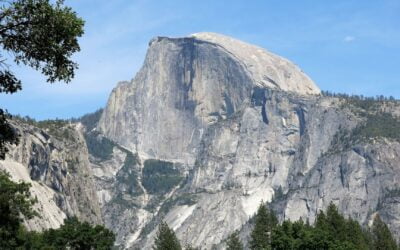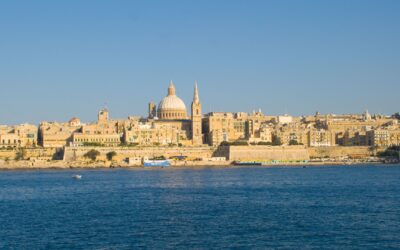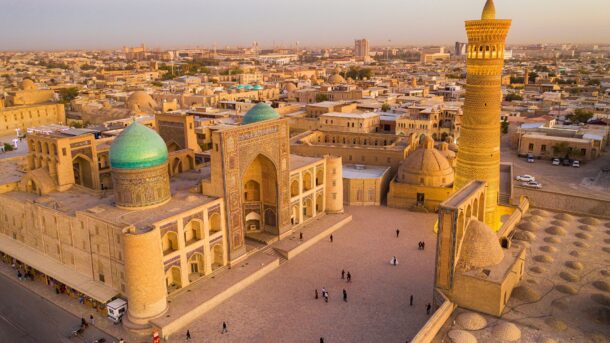Mount Kenya is an extinct volcano that is listed as a UNESCO World Heritage Site . At 5,199 m (17,057 ft), it is Africa’s second-highest peak, second to I-assume-you-already-know. If you are into dramatic rock formation, forested middle slopes, and lofty peaks, you may well consider climbing this volcano the next time you go mountaineering. Let’s help you explore Mount Kenya with an arguably fun trekking guide.
First thing first: Mount Kenya facts
I don’t know about you but, when I’m traveling to a place, I like to understand it as best as I can. Let’s start with four facts you might find interesting:
1. Halford John Mackinder, César Ollier, and Joseph Brocherel are officially the first to have reached the volcano’s summit. This happened on September 13, 1899.
2. The mountain’s highest points, namely Batian (5,199 m/17,057 ft) and Nelion (5,188 m/17,021 ft) are to be accessed with advanced climbing gear only.
3. Many trekkers stop at Point Lenana, which is Mount Kenya’s third-highest peak (4,985 m/16,355 ft).
3. Only about 50 peak enthusiasts reach Batian each year.
4. The Kikuyu people face their homes towards the peak, believing it to be the dwelling place of Ngai, their God.
Now, let’s move to some specifics so that you know what kind of flora and fauna to expect while climbing the mountain.
Mount Kenya’s flora
As is typically the case, the mountain’s flora will vary significantly by altitude. At the lower elevations, you will find the montane forests, which are dense and act as water catchments that support both the mountains and the surrounding areas’ ecosystems. Characterized by tall trees, dense undergrowth, and a moist climate, the montane forest zone hosts tree species such as camphor (Ocotea usambarensis), olive (Olea europaea), and African pencil cedar (Juniperus procera), which create a canopy that supports a thriving understory. The forest floor is lush with ferns, mosses, and lichens.
Once you’ve climbed past the montane forests, you’ll reach the bamboo zone, where you will find the African alpine bamboo (Yushania alpina). Don’t eat any, as fresh bamboo contains toxins that are poisonous to humans.
This is why they are called Giant groundsels
After hiking through a lot of bamboo, you’ll reach the alpine zone, which is dominated by heathland and moorland. This is a place with lower temperatures, strong winds, and less protective cover. Heathland is typified by low shrubs and tussock grasses, including species like Helichrysum and Protea kilimandscharica, which are adapted to the cold and windy conditions of high altitudes.
The moorland zone is more open, with patches of grasses and scattered shrubs, home to unique plant species such as giant groundsels (Senecio species), lobelias (Lobelia species), and everlasting flowers (Helichrysum species).
Mount Kenya’s wildlife
At the lower slopes of Mount Kenya, cloaked in montane forests and bamboo, you may encounter some African elephants, as well as cape buffalos. Primates such as the black and white colobus monkey and the Sykes’ monkey mostly live in the dense canopy. The forest floor is the domain of smaller mammals, including the tree hyrax and porcupines, and the unique Mount Kenya mole-rat, which lives in high-altitude burrows.
A cute African elephant
Cape buffalos looking at the camera. Or so I think
A Sykes monkey looking indifferent
The montane forests and bamboo zones also have plenty of avian species, including the Jackson’s francolin and the Verreaux’s eagle. And if you like reptiles, species to look out for include the Jackson’s chameleon and the East African green snakes. Amphibians, including the Mount Kenya reed frog and the alpine toad, are found near streams and wetlands.
A Verreaux’s eagle doing something
A Jackson’s chameleon. Nice “corns”
As it’s usually the case, at higher elevations, you get less mammal diversity. The Mount Kenya hyrax is one example of a mammal that can be found up to the highest elevations, surviving in harsh weather conditions that few other mammals can endure. The hyrax is quite small in size and possesses a dense fur coat to insulate against the cold at high altitudes. And if you look up, you may see evidence that the subalpine and alpine zones are also home to unique bird species like the scarlet-tufted malachite sunbird, which are adapted to the cold and have evolved specialized feeding and nesting behaviors to survive in these environments.
As you hopefully know, certain wild animals can attack if they feel in danger and you should not approach an elephant a buffalo, or a lion, among others.
Mount Kenya Climbing Routes
Now that you know a thing or two about what to expect when trekking Mount Kenya, it’s time to talk about the volcano’s climbing routes. Like with other mountains, it’s best to choose a path based on personal preferences but also your experience and endurance level. Here are some details that could help you decide.
The Sirimon Route
The Sirimon Route is one of those treks that you do when you want something moderate in terms of required effort. The route commences from the northwest side of Mount Kenya, near Nanyuki Town, and it’s said to provide a less crowded path to the summit compared to other options.
You begin the trip at the Sirimon Park Gate, situated at an altitude of 2,650 m (8,694 ft). This part of the trek is characterized by montane forests and it’s the place where elephants and buffaloes live.
Then, you ascend through the bamboo and rosewood forests into the heath zone, characterized by towering heathers, before opening up into the moorlands. It is in these moorlands where you find peculiar flora, such as the giant lobelias and groundsel – flora specific to the high altitudes of East African mountains.
Once you’ve crossed the upper moorlands, you reach the alpine zone, where rock and ice dominate the terrain. The final push to Point Lenana involves scree slopes and sometimes snow.
Typical Afro-alpine landscape at Mount Kenya
The Sirimon Route is known for a “gentle gradient” at the outset, meaning you will be able to gradually adapt to the increasing altitude. The “climb high, sleep low” principle can be effectively applied here, with day treks to higher altitudes followed by returns to lower elevations for overnight stays.
Among the route’s highlights are the views of the Mackinder Valley, with its peculiar cliff faces and the several alpine lakes. You will also see close-up views of Batian and Nelion.
The Naromoru Route
The Naromoru Route is the most popular path to Mount Kenya’s summit, yet, according to some, not the most scenic one. That being said, if you’re looking for the most direct path to the summit, then this is your ideal trek. Descending from the western flanks of Mount Kenya, this route is characterized by steepness and rapid elevation gain.
You start at the Naromoru Park Gate (2,400 m/7,874 ft), which is the gate to a montane forest belt. This section features towering trees and is inhabited by monkeys, elephants, and buffaloes, to name a few.
As you ascend, you move through the bamboo zone into the vertical bog, which is characterized by challenging wet conditions underfoot. The vertical bog is one of the most distinctive features of Naromoru Route and you need to prepare yourself emotionally for climbing through a wet, boggy terrain.
Beyond the bog, you enter the Teleki Valley, an alpine zone named after the explorer who first charted this route. From this valley, you can view Batian and Nelion. Then, you get into the alpine desert and, finally, to Point Lenana.
The Chogoria Route
The Chogoria Route is known to be very pretty, taking climbers through lush bamboo forests, spectacular waterfalls, and across the Gorges Valley, before reaching the rugged, rocky terrains higher up. It’s a longer, more gradual climb, making it ideal for those who need more acclimatization and who wish to explore Mount Kenya to a larger extent. However, note this trek includes sections that are somewhat more difficult.
You start, as you might suspect, at the Chogoria Gate (2,850 m/9,350 ft). Then, just as with other routes, you move through forests, then through bamboo groves, and then through open moorlands.
One of the trek’s highlights is the traverse alongside the Gorges Valley, where you can see the Temple, a massive rock formation, and Lake Michaelson.
The Timau Route
The Timau Route is less popular with tourists and distinguished by a more tranquil ascent through gentler slopes. The route approaches Mount Kenya from the North and consists of a gradual ascent until around 4,200 m (13,779 ft), where the terrain steepens, thus becoming more challenging.
An interesting feature of this trek is the passage through a significant rain shadow. Here, you see more sparse vegetation compared to the lush greenery found on other sides of Mount Kenya. Instead, you get interesting volcanic rock formations, which have their own charm. Another thing you might find of interest is that the route’s quietude may increase the chances of encountering elands, zebras, buffalos, and even the elusive lion.
The Burguret Route
The Burguret Route is another untamed path to Mount Kenya. The trek begins on the west side of the mountain and meanders through dense forests, afro-alpine zones, and heather moorlands before converging with more popular trails closer to the summit.
As one of the least trodden paths on Mount Kenya, the Burguret trek requires some extra navigation skills. If you are looking for some extra adventure, you may find the lack of a well-defined trail appealing. Just as in the case of Timau, the lack of much human activity on the route likely increases the chance of seeing some wildlife.
The Kamweti Route
Finally, another less-known path to ascent Mount Kenya is the Kamweti Route. Starting near the Kutus settlement, the Kamweti Route takes you on a journey through the mountain’s southern slopes, providing a secluded trek compared to the more popular routes.
While on the trek, you pass through the rainforest zone, the bamboo forests, the moorlands, and the alpine desert zone. The route merges with more commonly used trails at the Teleki Valley en route to Lenana Peak, offering one of the longest summit approaches on Mount Kenya.
Routes to Batian and Nelion
So far, we only spoke of routes taking you to Point Lenana and you might wonder about the routes to Batian and Nelion. While some people do manage to trek these peaks, it’s not something I would recommend to those without significant experience in rock climbing and proper equipment.
The climb to Batian and Nelion is predominantly rock, with routes ranging from Grade III to V+ in difficulty. For Batian, the most direct path is the North Face Standard Route, which is considerably more challenging than the alternative routes, requiring around 12 hours of climbing, an overnight camp, and then a 5-hour descent. This route starts from either Shipton’s Camp or Kami Hut and involves a pre-dawn start, usually around 2 to 3 hours of hiking to the base of the climb. The climbing involves several pitches of varying difficulty, with the route graded at IV. It can take you between 15 to more than 20 hours of climbing from hut to hut, including an overnight bivvy, with a descent time of 6 to 8 hours.
The preferred route for ascending Nelion is called MacKinders. This trek is categorized as a 5th-class rock route with a maximum difficulty of 5.6. The path features about 17 or more pitches that are belayed, with descents following similar routes, sometimes taking more direct lines down cleaner rock sections. Compared to Batian’s North Face Standard Route, MacKinders is considered easier, as it offers better rock and a sunnier position.
A trek to Nelion typically involves an 8-hour climb with 18 pitches, requiring one overnight camp and a 3-hour descent, starting from the Austrian hut. This path comes with some technical difficulties but is summitted generally in about 7 hours. If you plan to extend your expedition, you can stay overnight in Howell Hut and then traverse to Batian via the Gates of Mist, depending on ice levels.
Duration of & preparation for a Mount Kenya trekking experience
As you have already figured out from the routes’ descriptions, the time you will need to climb Mount Kenya will vary and typically range from 3 to 8 days. You can prepare for the trek with some physical training (dancing might count too) and by gathering essential gear like different weather-appropriate clothing, reliable tents, and first aid kits.
Best seasons to explore Mount Kenya
The best months for climbing Mount Kenya are January – February, and July – October, as these periods are significantly less rainy.
Camping at Mount Kenya
Mount Kenya is relatively popular with tourists, meaning there are quite a few accommodation options. For example, you can stay at simple, rustic campsites, ideal if you like sleeping under the stars. And if you are not sure whether you like it or not, imagine a sky without light pollution. On the main routes, you will also find huts placed strategically around them. These huts vary in terms of facilities but they will all have at least some beds. At higher altitudes, communal huts are common, which are equipped with basic necessities such as bunk beds and cooking facilities. They are obviously also good places to meet other trekkers.
Here are some accommodation options that have provided shelter to many:
- On the Sirimon Route: Old Mises Hut (self-service accommodation), Shipton’s Camp (accommodates up to 40 people), Liki North Campsite (offers space for tent camping but does not feature cabin facilities).
- On the Chogoria Route: Accommodations are designed for groups ready to camp, with a need to display tents at the park gate for access. Meru Mt. Kenya Lodge and Minto’s Hut cater to this need, although Minto’s Hut is primarily for porter use.
- On the Naro Moru Route: Met Station (offers basic self-service accommodation and camping), Mackinder’s Camp (cabin that can house up to 66 people), Austrian Hut (can accommodate 30 people in three rooms; must be big rooms).
You don’t need to stress yourself about booking public campsites ahead of time, as it’s not required and you will pay the daily camping fees at the park’s entry gate. You can, however, book a special campsite by contacting Kenya Wildlife Service at +254 726 610 533 or [email protected]. Booking for huts can be done in advance to secure a spot. For more information on camping, you should check Kenya Wildlife Service.
The costs of trekking Mount Kenya
Your overall costs of climbing Mount Kenya will, of course, vary significantly depending on the chosen route, the duration of the climb, the number of climbers, and the level of comfort and services provided during the trip.
For the non-technical but scenic and popular routes, you can expect to pay between $750 and $900. This price usually includes accommodation, meals, park fees, and guide services but might not cover additional expenses like transport to and from Nairobi, personal gear, and tips for the guides and porters. On the budget-friendly end, a 3-day climb via the Sirimon Route might cost between $400 to $520 per person.
For those considering technical routes to Batian and Nelion, the highest peaks, you’re looking at a more extended timeframe. As such, you will pay more, perhaps between $1,400 and $1,700 per person.
As is often the case, you will pay entrance fees to access the park. Mount Kenya National Park admission fees are set by the Kenya Wildlife Service. Currently, the entry fees are structured as follows: $150 per adult for a three-day visit, $220 for four days, or $300 for a five-day excursion, inclusive of both entrance and camping fees.
How to get to Mount Kenya?
To visit Mount Kenya as an international traveler, you can fly primarily through Jomo Kenyatta International Airport in Nairobi, which is the capital. Depending on your country of origin, you might need to obtain an e-visa in advance of your travel. Note that your passport needs to be valid for at least six months beyond your arrival date and to have at least two blank pages.
To get to Mount Kenya from Nairobi, you have a couple of options. You can use private transport, which can be arranged through service providers, or opt for public transportation like matatus (minibuses) and buses heading to nearby towns such as Nanyuki, Naro Moru, and Chogoria. Mount Kenya is approximately 200 km (about 124 mi) north of Nairobi. The roads to the main entrances of Mount Kenya National Park are in varying conditions, with some sections potentially requiring a 4-wheel drive.
A few things to know before arriving in Kenya
The official languages are English and Swahili, both of which are widely spoken throughout the country. English is predominantly used in commerce, education, and government, while Swahili serves as a national language and is especially prevalent in Nairobi City. Beyond these, indigenous languages such as Kikuyu, Luo, Akamba, and Maa play a significant role in the daily communications of various ethnic groups. Kikuyu, for instance, is one of the major regional languages and is spoken by the country’s largest ethnic group, particularly in areas surrounding Mount Kenya.
As for currency, the Kenyan Shilling (KES) is the official currency of Kenya. While it’s common for businesses, especially those catering to tourists, to accept major international currencies such as the US Dollar or the Euro, it’s generally expected that transactions within the country are conducted in Kenyan Shillings.
Hiking Mount Kenya by yourself vs. with a guided tour
If you have at least one more person with you, hiking Mount Kenya without a professional guide can be an option if you have trekking and high-altitude experience. If you are by yourself, joining a group is a must, as it is not allowed to climb the mountain alone. Note that trails are poorly marked and often obscured by clouds, for which traveling in a large group is the better option.
Organizing this trek may take a few days, so it’s best to plan accordingly. You may, for example, want to hire a guide, porters, a cook, and make hut reservations. It’s often easier to arrange a packaged trek, which generally includes transportation from Nairobi.
There are several well-reviewed guided tours to Mount Kenya that you can book in advance. For example, there is the five-day Climbing Mount Kenya 5 Days Via Chogoria Route tour, which starts in Nairobi and takes you to Point Lenana via the Chogoria Route. If you want to explore the Sirimon route, you can consider the four-day Mount Kenya Trekking tour, which also starts in Nairobi and takes you to Point Lenana. If you want to explore both the Sirimon and Chogoria route, consider the five-day Mount Kenya Sirimon – Chogoria Route tour. There are several other options available and it’s best to check each of those that have enough reviews so that you can find the option you like most in terms of route, duration, and things included.
Bottom line: Mount Kenya can be climbed in just a few days
By now you know quite a lot of things about climbing this mountain, provided you have paid enough attention to the content above. For example, you know that many trekkers only reach Point Lenana and some of the more experienced ones reach Batian and Nelion. It’s also worth mentioning that if your goal is to climb some of the world’s highest peaks without having to become a professional climber, Mount Kenya is a good pick.
Regardless of the route and peak of choice, it’s unlikely you will spend more than 8 days trekking the area. If your goal is to spend weeks in the country, consider exploring other trekking options, such as a wildlife safari or a city break in Nairobi. It’s also worth mentioning that the list of national parks in Kenya includes Nairobi National Park, Aberdare National Park, Maasai Mara National Reserve, and several more. Note that Maasai Mara is the place where you can get glimpses of the Wildebeest Migration, also known as the Great Migration –the world’s largest animal migration event on the planet which has been referred to as one of the Seven Wonders of the World. Feel free to go and see what all the fuss is about!

